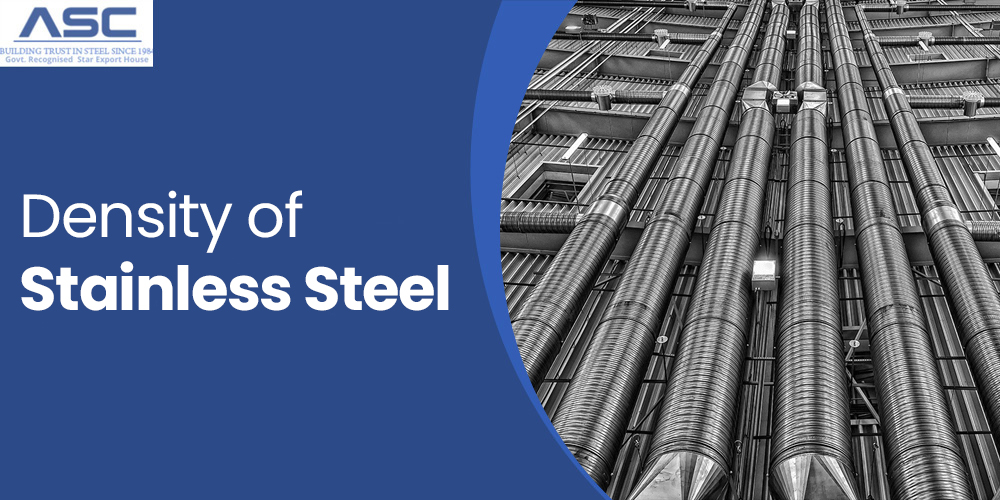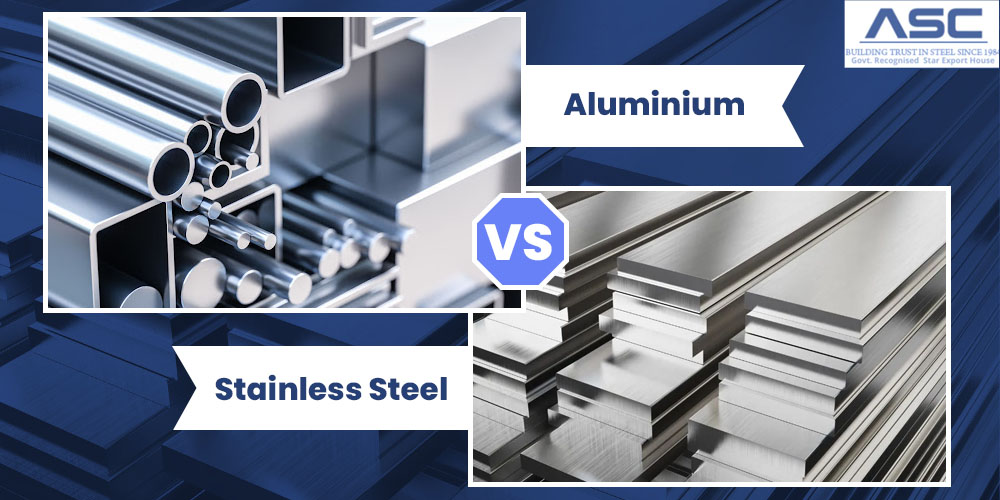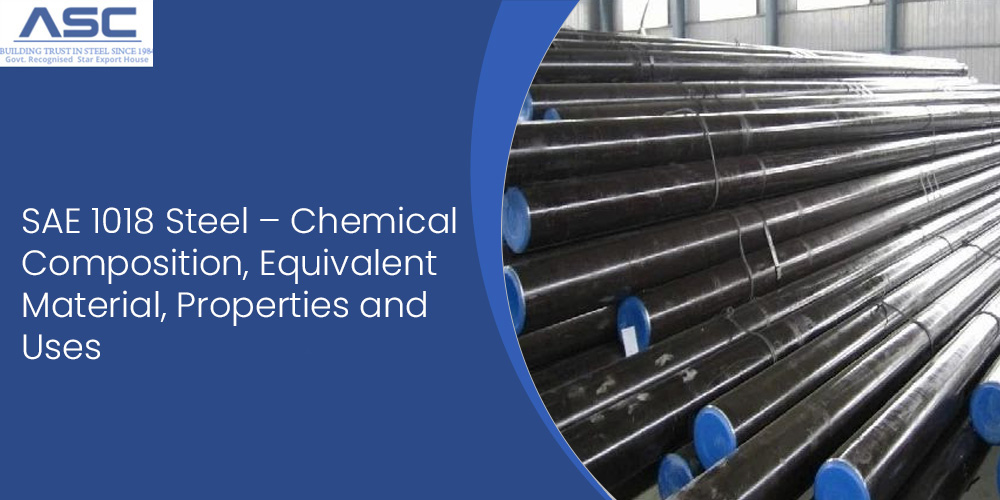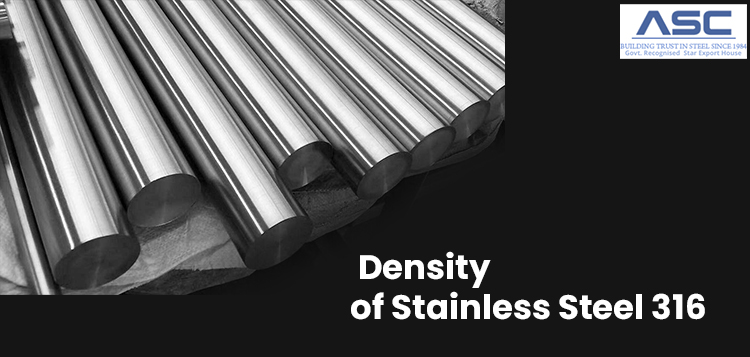The Density of Stainless Steel: Everything You Must Know
by AMC
Posted on January 06, 2024 at 03:57 PM

Stainless steel, a true marvel in the world of metallurgy, owes its versatility to a unique blend of
properties. Its resistance to corrosion, stains, and rust positions it as a standout metal alloy. Delving into
the factors that contribute to its exceptional characteristics, we uncover the pivotal roles played by
alloying elements, heat treatment methods, and precise composition, resulting in a density typically ranging
from 7.75 to 8.05 grams per cubic centimeter.
The strength of stainless steel is intricately linked to its composition and the nuances of its heat
treatment. Chromium, molybdenum, and nickel emerge as key players in defining this strength, with their
proportions directly impacting the material's durability. This inherent strength not only safeguards against
rust and corrosion but also makes stainless steel a prevalent choice in the crafting of domestic and medical
implements.
Beyond its functional prowess, stainless steel's visual appeal and minimal maintenance requirements elevate
its status in various architectural applications. Whether utilized in cladding, roofing, or window frames, the
alloy seamlessly combines aesthetics with practicality, contributing to its widespread use in construction.
Materials and Methods in Investigating Stainless Steel Density
The study of stainless steel density employs various laboratory tools and techniques for accuracy. Here's an overview of the equipment and methods used:
Laboratory Equipment:- Balance:Ensures precise measurement of stainless steel sample masses.
- Graduated Cylinder: Helps determine sample volume accurately.
- Thermometer: Crucial for temperature control during density calculations.
- Sample Preparation:Thoroughly prepares stainless steel samples with known volume and density for analysis.
- Measurement Collection: Utilizes the balance, graduated cylinder, and thermometer to collect precise measurements, considering temperature's impact on density.
- Calculation Techniques: Archimedes' Principle: Applied to stainless steel plates, it determines mass by displacing an equal volume of liquid (usually water) when immersed. Particularly useful for irregularly shaped samples. Geometric Formulas: Depending on steel shape, formulas like unit volume of a cylinder or cone may be used. These formulas determine the sample's volume, enabling density calculation.
Calculating the Density of Stainless Steel
Determining the density of stainless steel involves a straightforward calculation based on the mass and volume of a given sample. Here's a step-by-step guide:
Equipment Needed:- Digital Scale:Used to measure the mass of the stainless steel sample.
- Ruler: Essential for determining the accurate dimensions of the sample.
- Weigh the Sample: Use the digital scale to measure the mass of the stainless steel sample in grams or kilograms.
- Measure the Volume: Employ the ruler to determine the dimensions of the sample, calculating its volume. For irregularly shaped samples, consider using geometric formulas to find the volume.
- Density Calculation: Divide the mass of the sample by its volume. The formula for density (ρ) is: Density=MassVolumeDensity=VolumeMass
- Grams per Cubic Centimeter (g/cm³): The most common unit for density.
- Kilograms per Cubic Meter (kg/m³): Useful for larger quantities or industrial applications.
- Pounds per Cubic Inch (lbs/in³): Commonly used in some engineering contexts.
Guidelines for Calculating Stainless Steel Density
Calculating the density of stainless steel involves considering various factors to obtain accurate results. Here are the rules to follow:
1. Total Mass and Alloying Elements:The density is directly influenced by the total mass of stainless steel, including its alloying elements.
Different alloy compositions can impact density variations.
The density of stainless steel is affected by temperature changes.
As temperature rises, the density increases, making hotter steel denser than colder steel.
The form of stainless steel plays a crucial role in density calculations.
Hollow stainless steel objects will have different densities compared to solid ones.
The thickness of stainless steel affects its density.
Density decreases as thickness decreases, impacting the overall mass/volume ratio.
Consider the weight of alloy components, as a heavier element will contribute to higher density.
Non-metallic components (e.g., air or water) also affect the overall density.
Utilize the formula: Density=MassVolumeDensity=VolumeMass
Account for temperature adjustments if the stainless steel is subject to varying temperatures during
measurement.
Can Stainless Steel Rust?
Contrary to its name, stainless steel is not entirely immune to rust and corrosion. The presence of iron in
stainless steel renders it susceptible to oxidation when exposed to oxygen and moisture.
While stainless steel is primarily composed of steel alloyed with nickel, chromium, and molybdenum to enhance
corrosion resistance, it can still develop a slight rust coating under specific conditions.
- Environmental Conditions: The presence of saltwater and airborne moisture, especially in coastal areas, increases the likelihood of rust on stainless steel.
- Chemical Exposure: Corrosive environments containing acids can also contribute to the corrosion of stainless steel.
- Keep it Dry: Shield stainless steel from rust by maintaining a dry environment and minimizing exposure to moisture.
- Regular Cleaning: Consistent cleaning with mild soap and water is an effective method to protect stainless steel from rust and corrosion.
Can Stainless Steel Rust?
Stainless steel, celebrated for its durability, corrosion resistance, and aesthetic allure, demands regular cleaning to maintain its gleam. Here's a step-by-step guide on how to effectively clean stainless steel and safeguard its luster:
Materials Needed:- Soft cloth or sponge
- Mild dish soap solution
- Stainless steel cleaner (optional)
- Mild abrasive cleaner (e.g., baking soda or Bar Keeper's Friend)
- Stainless steel polish or wax
- Prepare Cleaning Solution: Mix water with a mild dish soap solution. Alternatively, use a specialized stainless steel cleaner designed for optimal results.
- Wet the Cloth or Sponge: Dampen a soft cloth or sponge with the cleaning solution.
- Clean in Circular Motion: Gently scrub the stainless steel surface in a circular motion to remove dirt, dust, and fingerprints.
- Rinse with Clean Water: Flush the cleaned area with clean water to remove any remaining cleaning solution.
- Tackle Stubborn Stains (If Necessary): For stubborn stains, a mild abrasive cleaner like baking soda or Bar Keeper's Friend can be applied. Rinse thoroughly with clean water afterward.
- Dry with a Soft Cloth: Use a soft cloth to dry the stainless steel surface, preventing water spots.
- Apply Stainless Steel Polish or Wax: Use a dedicated stainless steel polish or wax to remove fingerprints and add a protective layer. Apply according to the product's instructions.
- Avoid using steel wool, bleach, or abrasive materials, as they can corrode the stainless steel.
- Regular cleaning helps prevent the accumulation of grime and maintains the stainless steel's longevity.
Stainless Steel Grades
Stainless steel, a robust and corrosion-resistant alloy composed of iron, carbon, and a minimum of 10.5% chromium, offers a spectrum of grades, each with distinct attributes. Here's a breakdown of the two primary types—Austenitic and Ferritic—and notable grades within these categories:
1. Austenitic Stainless Steels:- 304 (Type 304)
- 316 (Type 316)
- 430 (Type 430)
- 409 (Type 409)
- 410 (Type 410)
- Stainless steel densities range between 7.7 and 8 grams per cubic centimeter, influenced by the type and grade.
- Austenitic grades (e.g., 304, 316) are non-magnetic and offer superior corrosion resistance.
- Ferritic grades (e.g., 430, 409, 410) are magnetic but exhibit lower corrosion resistance compared to austenitic counterparts.
Significance of Knowing Stainless Steel Density: A Practical Overview
Understanding the density of stainless steel is crucial for a myriad of practical applications across engineering, design, and resource management. Here's why this knowledge holds paramount importance:
1. Resource Allocation and Planning:- Engineers and designers rely on stainless steel density to estimate material requirements for creating products of specific sizes or shapes.
- Enables effective resource allocation and meticulous planning for future projects.
- Knowledge of stainless steel density aids in determining shipping costs, as it provides insights into the overall weight of the material being transported.
- The density of stainless steel is a key factor in choosing the most suitable grade for a particular project.
- Different grades have varied properties, such as corrosion resistance and heat tolerance, making density a crucial criterion in material selection.
- Stainless steel comes in various thicknesses, and understanding density helps in selecting the appropriate thickness for specific applications.
- For instance, 304 stainless steel, being denser, is more resistant to corrosion and high temperatures compared to 316 stainless steel.
- Knowing the density is essential for calculating the volume of an object made of stainless steel when its mass is known.
- Facilitates practical applications, such as in designing and manufacturing processes.
Is Galvanized Steel the Same as Stainless Steel?
Stainless steel and galvanized steel are two distinct materials with unique properties. Galvanized steel
refers to steel that has a thin layer of zinc applied to prevent rusting, significantly enhancing its
resistance to corrosion and prolonging its lifespan compared to untreated steel. This coating acts as a
protective barrier against environmental elements.
In contrast, stainless steel is an alloy composed of iron and chromium, designed to resist rust and
corrosion far more effectively than galvanized steel. Its inherent properties make it a preferred choice
for applications where corrosion resistance is crucial.
While galvanized steel offers increased longevity and protection from rust compared to untreated steel, it
is not as corrosion-resistant as stainless steel. The choice between these materials depends on the
specific requirements of the application. Stainless steel finds extensive use in environments where
superior corrosion resistance is paramount, such as in kitchen appliances, food preparation areas,
buildings, and chemical processing facilities. Despite the higher cost associated with stainless steel,
its longevity and enhanced protective features make it a valuable investment in scenarios where durability
and resistance to corrosion are essential.
Which are the Properties of Stainless Steel?
Stainless steel, an alloy primarily composed of iron and chromium, boasts a set of remarkable properties that make it indispensable in various applications:
1. Corrosion Resistance:- Stainless steel is renowned for its exceptional resistance to rust and corrosion, making it highly durable in diverse environments.
- The alloy's high strength and durability contribute to its widespread use in construction, manufacturing, and other demanding fields.
- Depending on the specific alloy, the density of stainless steel can vary between 7.75 to 8.03 g/cm³, offering versatility in different applications.
- Stainless steel exhibits strong heat resistance, making it ideal for applications subjected to extreme temperatures without compromising its structural integrity.
- Stainless steel is non-magnetic, making it suitable for applications where magnetism is undesirable, providing flexibility in its use.
- Its resistance to corrosion, coupled with durability, makes stainless steel an excellent material for outdoor applications, enduring exposure to varying weather conditions.
- Stainless steel can be easily formed and welded, allowing for versatile fabrication and customization in different shapes and sizes.
- The alloy can be polished to a high sheen, making it an attractive option for decorative purposes in architecture, design, and various aesthetic applications.
Conclusion
The selection of materials for specific purposes requires a careful consideration of stainless steel
density and chemical composition. The thickness of stainless steel, ranging between 7.75 and 8.03 g/cm3
depending on the alloy, is intricately tied to its strength, determined by the presence of chromium,
molybdenum, and nickel.
Differences in density, toughness, and resistance to corrosion and high temperatures among stainless steel
grades highlight the importance of selecting the right alloy for specific applications. For example, the
distinctions between 304 and 316 stainless steel showcase variations in these properties.
Understanding the density of stainless steel is instrumental in practical applications, such as
determining the volume of objects made from this material. Its longevity and resistance to corrosion make
stainless steel a preferred choice in industries like food service.
For comprehensive stainless steel solutions, Amardeep Steel Supply stands as a reliable provider of
top-quality fittings, pipes & tubes and various other products. Whether it's for construction or
industrial projects, our expertise ensures the supply of suitable materials. Contact Amardeep Steel today
for all your stainless steel products needs – just one call away!

Aluminium Vs. Stainless Steel: Which is Better for Your Project?
At first glance, aluminium and stainless steel may appear very similar. They both come in various finishes, offer some degree of corrosion resistance, and can be found in numerous applications.

